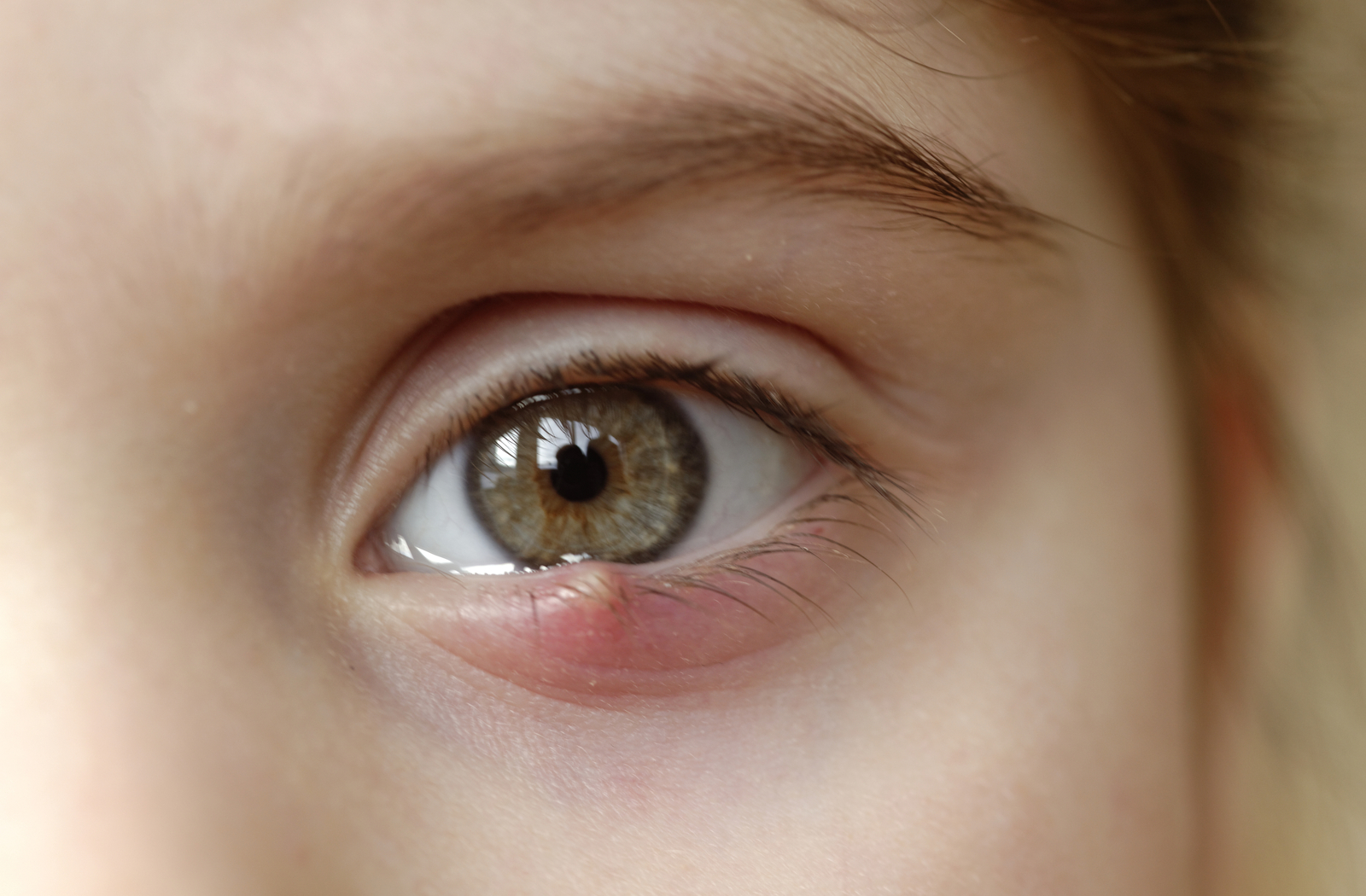

What is a stye?
A stye (hordeolum) is a small, painful lump on the outside or inside of your eyelid. Styes often look like pimples.
A stye may be a different colour to the rest of your skin due to swelling. If a stye eye has a white spot in the middle, this means there is pus inside.
The stye may feel sore and tender. It may cause your eye to water.
Chalazion cysts are another type of lump that can be found on the eyelid. These are not painful.
What causes a stye?
Styes are quite common. They are caused by a bacterial infection of an eyelash follicle.
In contrast, chalazions are caused by blocked glands on the eyelid.
How is a stye treated?
Styes usually clear up by themselves in a few days.
Styes usually grow larger and release pus before going away.
Here are some things you can do to help your stye heal:
- Hold a warm compress against your closed eyelid for 2 to 5 minutes at a time. This can help open the blockage. A clean face washer that has been wet with very warm water is ideal. Be careful not to burn yourself, but ensure the water is as warm as you can handle. Do this up to 20 times a day, gently massaging your eyelid. Always make sure your eye is closed when doing this.
- Keep the area around your eye clean by gently washing your eyelid with water.
- You can also clean your eyelid by using a damp cotton wool pad to wipe away any discharge. Do not use dry cotton wool or a tissue to clean your eyelid since this may scratch it.
- Try not to wear eye make-up or contact lenses until the stye has gone as this may irritate your eye and block the glands further.
- Try not to rub, poke, prod, squeeze or scratch the stye since this could cause the infection to spread. Avoid using sharp objects, such as tweezers, around your eyes.
When should I see my doctor?
You should see a doctor if you experience:
- a stye that is not getting better after a couple of days
- a stye that obstructs your vision
- red, swollen, painful skin around the stye
- other problems such as fever, eye discharge, nausea, headache, or loss of appetite
Antibiotics are not usually used to treat styes.
If a stye lasts longer than 3 months, a doctor may have to remove It.
See your doctor straight away or go to the nearest hospital emergency department if the skin on your eyelid or the eye itself becomes red, swollen or painful.
Can styes be prevented?
Some cosmetic and hygiene choices increase your risk of getting a stye.
Ways to prevent styes include:
- Wash your hands thoroughly and avoid touching your eyes.
- Avoid using old cosmetics and sleeping in makeup.
- If you use contact lenses, make sure your hands are clean before you touch them. Ask your doctor or pharmacist how to disinfect your contacts.
Some skin conditions such as blepharitis and rosacea can also increase your risk of a stye. Ask your doctor for advice.
Complications of a stye eye
If the infection from the stye eye spreads to the surrounding skin, this is called cellulitis. You will need antibiotics to treat it.
Rarely, the infection can spread closer to the eye – this is a medical emergency and needs immediate treatment.
See your doctor straight away or go to the nearest hospital emergency department if the skin on your eyelid or the eye itself becomes red, swollen or painful.

